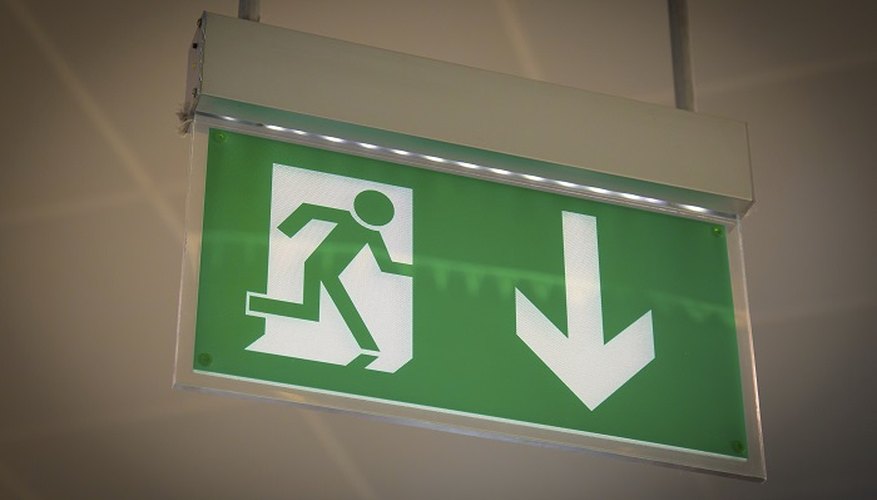A narrow aisle can make it impossible for everyone to evacuate an office in time. For this reason, offices must comply with standard guidelines that dictate the width of corridors and exit placements. While different organisations might say their requirements are based on occupational safety office requirements or building codes, their numbers usually match those set by the UK government's fire safety regulations.
Leaving the building
UK fire safety regulations state that an aisle or corridor classified as an escape route to the nearest fire exit should should not be less than 75 cm (29 1/2 inches) unless it is for use by less than five people in a specific part of the premises.
- A narrow aisle can make it impossible for everyone to evacuate an office in time.
- UK fire safety regulations state that an aisle or corridor classified as an escape route to the nearest fire exit should should not be less than 75 cm (29 1/2 inches) unless it is for use by less than five people in a specific part of the premises.
Interior width
Further inside the office, minimum widths for unblocked aisles vary depending on the age of the building and the number of people likely to use the escape route. Another factor to consider is disabled users. Where wheelchair access might be required, the minimum width of an escape route must be 95 cm (37 inches).
Safety inspections
All office premises must meet local building codes and national fire safety regulations. Most companies carry out regular fire risk assessments to ensure office accommodation meets regulations.
